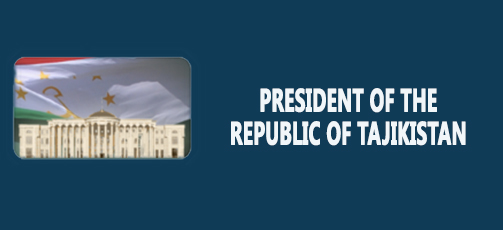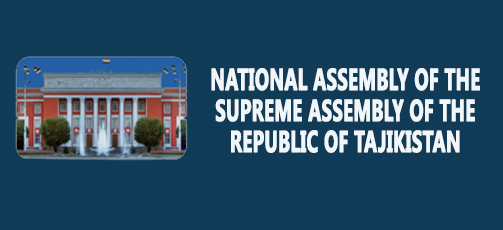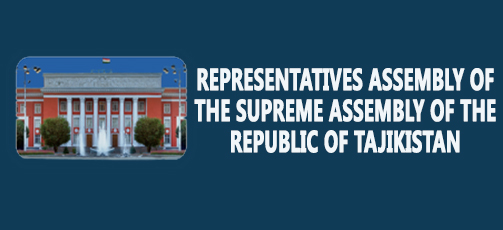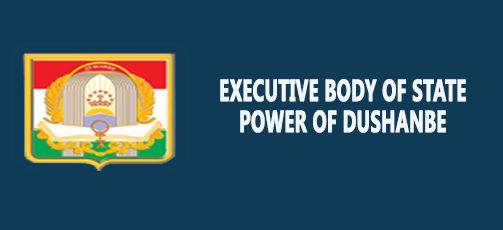Tajikistan Ranks Second in the World in Terms of Cheap Electricity
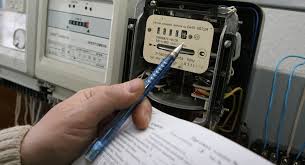
DUSHANBE, 10.10.2019 (NIAT Khovar) – On June 22, the government of Tajikistan adopted a decree on increasing electricity tariffs. The cost of electricity has increased by almost 17%. Henceforth, the Tajik population pays 22.66 Tajik diram (2.1 cents) for every kilowatt (kW) instead of the current tariff of 19.37 Tajik diram (1.87 cents).
Khovar’s correspondent Khushnud Rahmatullozoda conducted a comparative analysis of the cost of electricity in different countries of the world and discovered interesting statistics.
Tariffs have increased for all categories of consumers, except for the State Unitary Enterprise Tajik Aluminum Company (TALCO). For the main consumer of Tajik electricity — TALCO tariffs are 7.20 Tajik diram per kW/h from May 1 through September 30 and 11.80 Tajik diram in the winter period — from October 1 through April 30.
The tariff for industrial and non-industrial consumers is now 55.14 Tajik diram, for consumers in the public sector, utilities and sports complexes — 22.66 Tajik diram, for water pumps and pumping stations for machine irrigation, repair and production facilities of the Agency for Land Reclamation and Irrigation — 7,87 Tajik diram (from April 1 through September 30) and 22.66 Tajik diram (from October 1 through March 31), for reclamation vertical wells, reclamation pumping stations — 7.87 Tajik diram.
The use of electricity for electric boilers and electrical equipment which are used for providing hot water and heating for buildings will amount to 136.62 Tajik diram per kW (for non-budget sectors) and 40.37 Tajik diram (for budget organizations and institutions).
For drinking water pumps (exceptindividual pumps) and sewage the cost is 10.76 Tajik diram.
Also, the Tajik Metallurgical Combine has been added as a separate category to the decree, which from September 1 will cost 9.68 Tajik diram per kW and 55.14 Tajik diram (from October 1 through March 31).
Why did electricity prices increase?
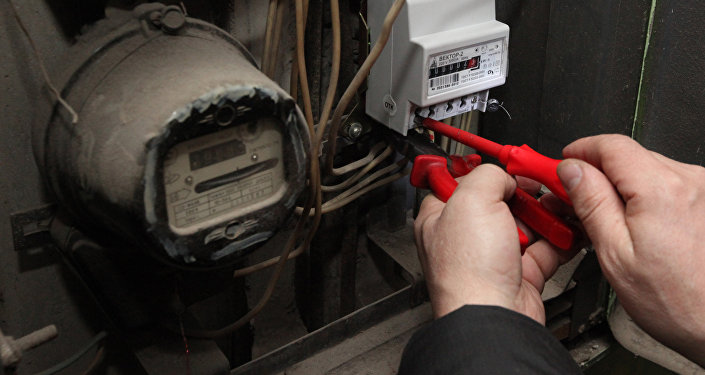 The increase in electricity prices occurred in Tajikistan on the recommendation of the World Bank and the European Bank for Reconstruction and Development, which advised the government of Tajikistan to gradually raise electricity tariffs to encourage rational use of electricity. And then, prices are rising everywhere and for everything. They tend to increase as the cost of production increases and the needs of the population increase.
The increase in electricity prices occurred in Tajikistan on the recommendation of the World Bank and the European Bank for Reconstruction and Development, which advised the government of Tajikistan to gradually raise electricity tariffs to encourage rational use of electricity. And then, prices are rising everywhere and for everything. They tend to increase as the cost of production increases and the needs of the population increase.
Earlier, the Chairman of Barki Tojik Open Joint-Stock Holding Company Mirzo Ismoilzoda stated that tariff increasedin order to keep energy facilities in working condition, which requires large costs.
Barki Tojik reported that current tariffs do not cover costs.
“In 2019, a special working group was created by ministries and responsible departments to verify the audit of Barki Tojik, which, on the basis of the analysis, established that considering current tariffs, Barki Tojik’s revenues in 2019 will amount to approximately 3.5 billion Tajik somoni and expenses — 4.1 billion Tajik somoni. In this regard, the working group proposed to the country’sgovernment to increase tariffs by 17%,”said the Chief of Barki Tojik’s Finance Department Rustam Majidzoda at a press conference on July 31 in Dushanbe.
He emphasized that considering the return of investment funds, the cost of one kW of electricity is currently almost 29 Tajik diram, and the average tariff for electricity is 20 Tajik diram.
In accordance with the governmentaldecree, a certain amount of electricity for poor families is subsidized in the amount of 150 kW from April through September and in the amount of 250 kW from October through March.
The Antimonopoly Service associated the increase in electricity prices with the need for financial stabilization of Barki Tojik.
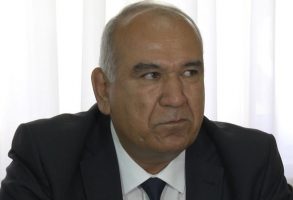 “The financial condition of Barki Tojik needs to be improved. And the tariffs that apply to the population and enterprises now do not cover the costs of the holding. That is, existing tariffs are lower than the cost of electricity produced,” said the former deputy head of the Antimonopoly Service of Tajikistan Nazar Odinazoda at a press conference on July 17 in Dushanbe.
“The financial condition of Barki Tojik needs to be improved. And the tariffs that apply to the population and enterprises now do not cover the costs of the holding. That is, existing tariffs are lower than the cost of electricity produced,” said the former deputy head of the Antimonopoly Service of Tajikistan Nazar Odinazoda at a press conference on July 17 in Dushanbe.
At a meeting of the government of Tajikistan on June 21, it was noted that due to the measures taken to reduce electricity losses in the period 2014-2018, the level of electricity losses decreased from 17.3 percent in 2014 to 15.5 percent in 2018. During this period, the useful volume of electricity in the domestic market increased, and fundraising from 1 billion 40 million Tajik somoni in 2014 doubled in 2018 and reached 2 billion 79 million Tajik somoni.
In order to further improve fundraising and further reduce the level of electricity losses, President Emomali Rahmon called for completely switching to a modern system of accounting for the consumption of electricity transmitted from substations to the consumer.
It was decided that in order to determine the real amount of electricity losses, reduce and increase them, the amount of fundraising for the use of electricity through the transition to the new system, the Ministry of Energy and Water Resources, the State Energy Control Service and Barki Tojik Open Joint-Stock Holding Company should take concrete measures and report on the results annually to the government of Tajikistan.
The report of the Minister of Energy and Water Resources Usmonali Usmonzoda to the government noted that Tajikistan has developed an action plan to improve the financial standing of Barki Tojik for 2019-2025, the implementation of which requires $1.2 billion.
It is noted that these funds will be used for current payments, payment of accounts payable to independent electricity producers (Sangtuda-1 HPP and Sangtuda-2 HPP), payment of commercial debts to a local bank (Orienbank), creation of the necessary infrastructure for counting, reconstruction and modernization of transmission and distribution facilities, etc.
So, we were convinced that the increase in electricity tariffs was caused by the need to streamline the energy system. Undoubtedly, the increase in tariffs gives rise to ambiguous reactions. However, let’s think about whether the Tajik residents pay so much for the electricity?
How is the situation in the Central Asian countries?
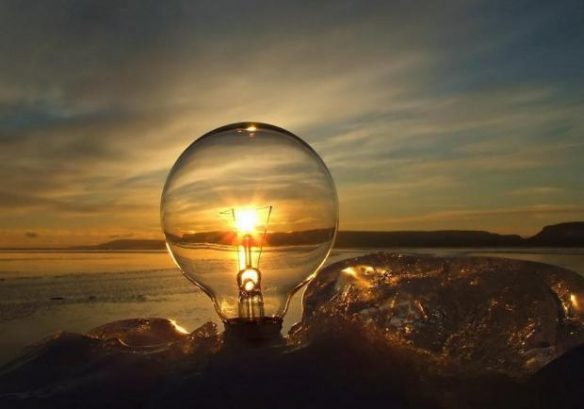 The population of Turkmenistan has been using natural gas, water, and electricity for free since 1993. Later, the first President of Turkmenistan Saparmurat Niyazov extended the decree of the People’s Council until 2030. However, the people’s deputies voted to abolish the benefits. Since January 1, 2019, the free consumption of electricity and gas, drinking water and table salt has been canceled.
The population of Turkmenistan has been using natural gas, water, and electricity for free since 1993. Later, the first President of Turkmenistan Saparmurat Niyazov extended the decree of the People’s Council until 2030. However, the people’s deputies voted to abolish the benefits. Since January 1, 2019, the free consumption of electricity and gas, drinking water and table salt has been canceled.
In early November 2018, Uzbekistan increased its tariffs for energy – gas, electricity, gasoline and diesel fuel. Since June 1, 2019, the Ministry of Finance of Uzbekistan has substantiated the need to increase tariffs by the fact that without this it is impossible to attract investment in the energy sector, since no investor will invest in obviously unprofitable sectors.
The cost per kW/h of electricity for household consumers in a neighboring country is 250 Uzbek som ($ 0.030). For citizens living in apartment buildings and hostels, centrally equipped with electric stoves for cooking, the tariff will remain at 125 Uzbek som ($ 0.015) per kW / h. Gas supplied to the population by meters costs 320 Uzbek som ($ 0.038) per cubic meter, in the absence of meters — 553 Uzbek som ($ 0.065). The price of gas for heating is 320 Uzbek som ($ 0.038).
How much does electricity cost in other countries of the world?
The cost of electricity given in the rating is an estimate of the average level in the country for comparison purposes and may vary significantly in each case depending on the place of residence in the country, the volume of family consumption, the availability of electric stoves, central heating, etc.

The top ten countries with the cheapest electricity for the population include some of the former Soviet republics. The cheapest electricity is in Turkmenistan. Electricity is not much more expensive in Tajikistan, Kyrgyzstan and Uzbekistan, where it costs $ 0.02 per kW/h.
If we talk about Kazakhstan, then the tariffs there can be called very moderate — from 3 to 11 cents per kW/h.
Ukraine is in fifth place, with an average price of $ 0.05 per kW / h. Almost the same price as in Azerbaijan.
Electricity is a little more expensive in Belarus — $ 0.06, in Georgia and Kazakhstan — $ 0.07, and Serbia and Russia close the «cheap» top ten countries, where the population pays $ 0.08 for electricity.
The electricity costs $ 0.10 per kW/h in Turkey and $ 0.13 cents in the US. Poles, Czechs and Slovaks are already forced to pay more $0.18 per kW / h. The prices in France and UK are almost the same — in the range of $ 0.21-0.22.
In Greece, Sweden and Austria for a kW/h of electricity you need to pay $0.24. Relatively, expensive electricity is in Germany and Denmark — $ 0.38 per kW/h. It is not surprising that in these countries “green” technologies and energy saving are so popular.
The Solomon Islands are the absolute champion in the value of the tariff — there you will have to pay as much as $0.95 cents for 1 kW. In these places, people solve the problems of power supply on their own — they utilize diesel and wind generators, as well as solar panels. In second place is another island nation with the romantic name of Tonga –where electricity costs almost 50 cents per kW. The third place is occupied by the famous island of Jamaica. Everything is fine at this resort — the climate, the sea, and the birds with shells. But electricity prices are not encouraging — almost 45 cents.
In New Caledonia (France’s special administrative-territorial unit located in the Pacific Ocean) and on the Cook Islands, the lamps are not turned on unless absolutely necessary, because there are each kW costs from 42 to 44 cents. In American Samoa, known as the state with the most prosperous inhabitants in the world, electricity tariffs are 41 cents.
Tariffs in Switzerland, the Netherlands, Spain, and Finland range from 20 to 28 cents per kW.
Israel provides electricity to its citizens for 18 cents. In Montenegro and Bulgaria, 1 kW costs 16, 15 and 11 cents, respectively.
Next are countries that provide the population and industry with fairly inexpensive electricity.
Tariffs in China, India and Egypt range from 7.5 to 10 cents per kW / h. Paraguay, Vietnam and the UAE have the same tariffs — only 8 cents.
The average price of electricity in the world varies from 8 to 20 cents per kW, regardless of the income of citizens.
Canada is interesting because, Ontario, the most populated in the country, buys electricity 2-3 times more expensive than the rest, including provincial centre — Toronto.
Norway sells its electricity to its population for 15.9 cents, and it was and remains at the same time the “world champion” in the production of electricity per capita.
***
In general, as the analysis shows, electricity prices are not always associated with the country’s energy resources. They are largely determined by the world market and the economic policies of states.
The analysis also shows that considering the construction of Rogun HPP, the commissioning of Sangtuda-1 and Sangtuda-2 HPPs as well as numerous small hydropower plants in recent years, we can conclude that the economic policy of the government of Tajikistan is aimed at containing the rise in electricity prices and thus, on the social protection of the country’s population.








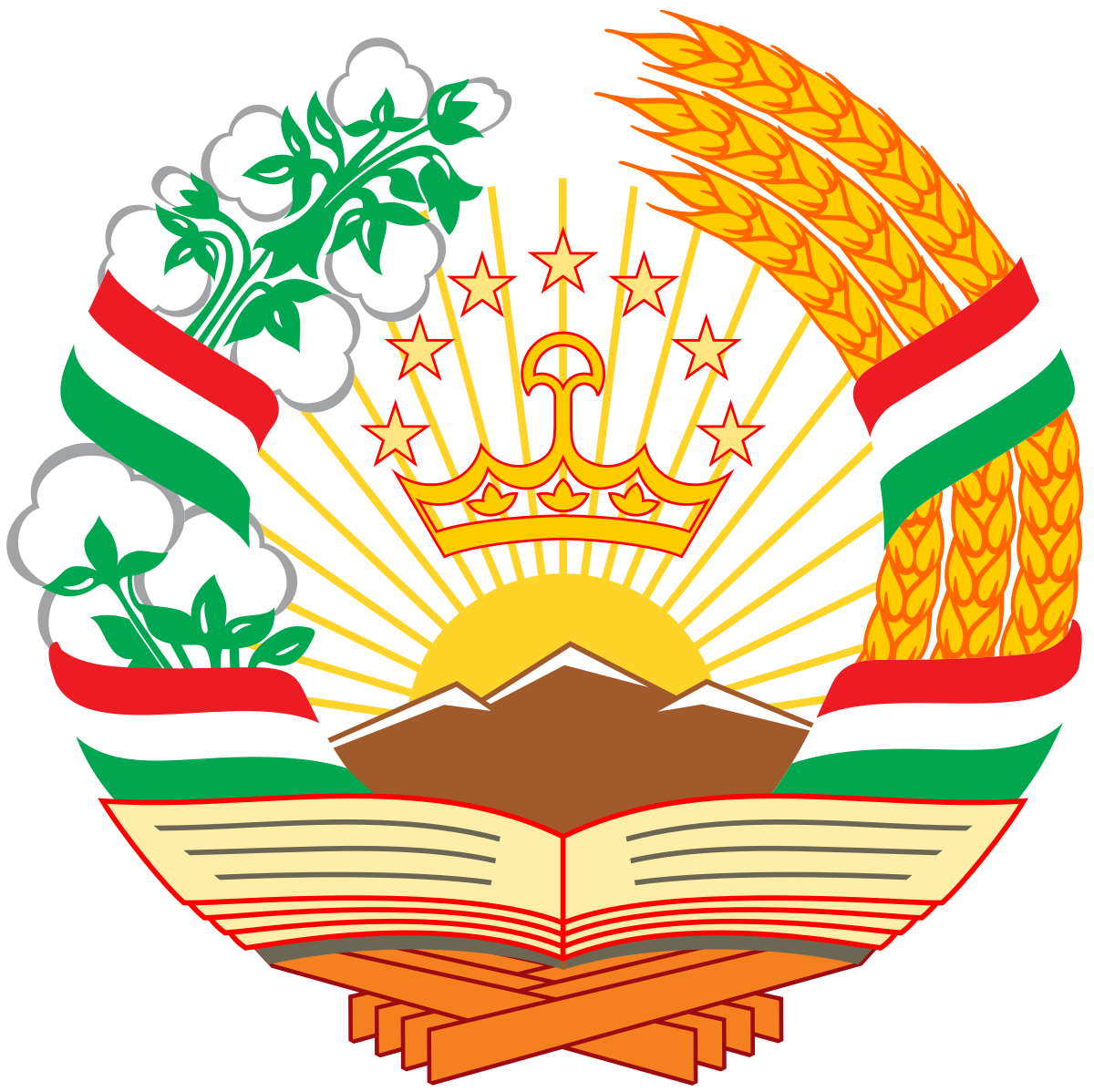

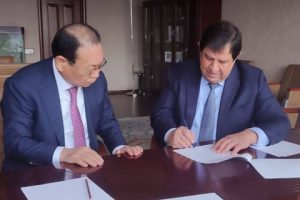 Kia Motors Representative Office to Open in Dushanbe
Kia Motors Representative Office to Open in Dushanbe Tajikistan Takes Measures to Protect Agro-biological and Genetic Resources
Tajikistan Takes Measures to Protect Agro-biological and Genetic Resources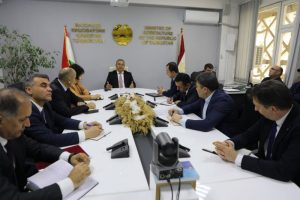 Construction of Three Agrological Centers Will Begin in Tajikistan in July
Construction of Three Agrological Centers Will Begin in Tajikistan in July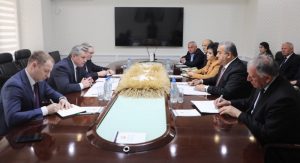 Tajikistan and Belarus Express Interest in Agricultural Cooperation
Tajikistan and Belarus Express Interest in Agricultural Cooperation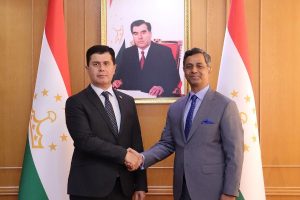 Foreign Trade Turnover Between Tajikistan and Pakistan Increases by 1.6 Times in 2023
Foreign Trade Turnover Between Tajikistan and Pakistan Increases by 1.6 Times in 2023 Tajikistan’s Deputy Premier Attends Meeting of the CIS Economic Council in Moscow
Tajikistan’s Deputy Premier Attends Meeting of the CIS Economic Council in Moscow Representatives of Tajikistan Attend Airspace World 2024 in Geneva
Representatives of Tajikistan Attend Airspace World 2024 in Geneva Tajik Minister of Transport and the President of the Russian Association of Concrete Roads Discuss Introduction of Road Laying Technologies
Tajik Minister of Transport and the President of the Russian Association of Concrete Roads Discuss Introduction of Road Laying Technologies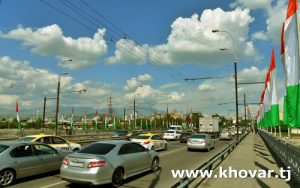 Number of Cars Increases in Tajikistan in Recent Years
Number of Cars Increases in Tajikistan in Recent Years UNECE Will Provide Technical Assistance to Tajikistan in Preparation for SPECA Activities
UNECE Will Provide Technical Assistance to Tajikistan in Preparation for SPECA Activities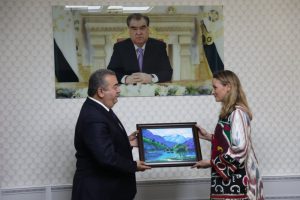 EU Is Interested in Cooperation with Tajikistan in the Agricultural Sector
EU Is Interested in Cooperation with Tajikistan in the Agricultural Sector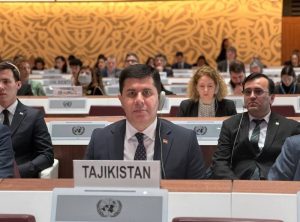 Tajik Delegation Attends the UNECE Regional Forum on Sustainable Development in Geneva
Tajik Delegation Attends the UNECE Regional Forum on Sustainable Development in Geneva








